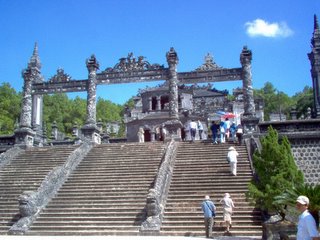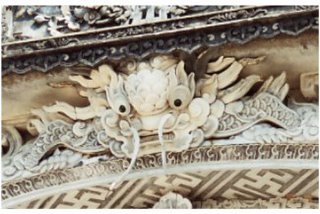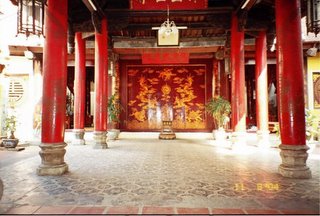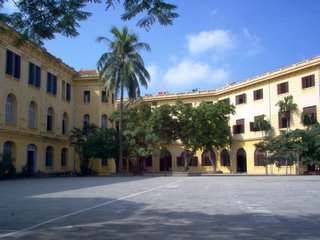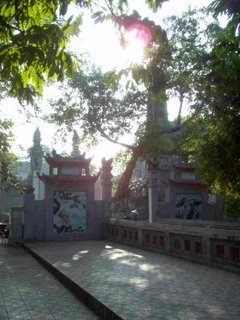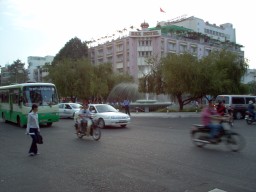VN Trip-Day5-Tomb of Tu Duc Emperor
It was incredibly beautiful!
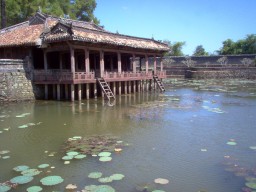 Emperor Tu Duc (1829-1883) was fourth ruler of the Nguyen Dynasty, independent Vietnam last emperor, reigning from 1848 to 1883. Some would perhaps regard him as the emperor who lost Vietnam to French domination. He is regarded as one of the more decadent cruel Vietnamese Emperors. Although he was a dedicated Confucian, his lifestyle was unusual in all areas. At each meal he would have a choice of fifty dishes that were delivered by fifty servants and prepared by fifty chefs! When Tu Duc drank tea, the water was collected as dew from lotus leaves. He also had one of his own brothers put to death after his involvement in a revolt against him. Tu Duc lived longer than the other Nguyen emperors. During his lifetime he had 104 wives and many more concubines, but he fathered no children. He was often ill, and he was likely sterile due to smallpox early in his life.
Emperor Tu Duc (1829-1883) was fourth ruler of the Nguyen Dynasty, independent Vietnam last emperor, reigning from 1848 to 1883. Some would perhaps regard him as the emperor who lost Vietnam to French domination. He is regarded as one of the more decadent cruel Vietnamese Emperors. Although he was a dedicated Confucian, his lifestyle was unusual in all areas. At each meal he would have a choice of fifty dishes that were delivered by fifty servants and prepared by fifty chefs! When Tu Duc drank tea, the water was collected as dew from lotus leaves. He also had one of his own brothers put to death after his involvement in a revolt against him. Tu Duc lived longer than the other Nguyen emperors. During his lifetime he had 104 wives and many more concubines, but he fathered no children. He was often ill, and he was likely sterile due to smallpox early in his life.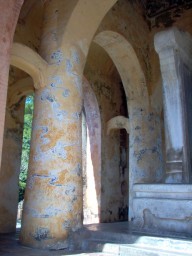 His tomb was constructed between 1864 and 1867 by over 3000 soldiers and workers, had about 50 buildings, surrounder by 1500m long brick and stone wall. It is regarded by Tu Duc as a modest complex, enough that he included the word khiem (meaning modest) in the name of every building. The emperor used the grounds to hunt game in the woods and recite poetry with concubines on the lakeside. He even constructed Hoa Khiem Temple on the site to use as a palace during his long retreats to the area. In an attempt to foil grave robbers, his body was not even buried in the tomb, and all those who were involved in the burial were beheaded. His body and treasures are at a destination which to this day is unknown. In keeping with Chinese and Vietnamese traditions, there is a Stele House on the Tu Duc Mausoleum site.
His tomb was constructed between 1864 and 1867 by over 3000 soldiers and workers, had about 50 buildings, surrounder by 1500m long brick and stone wall. It is regarded by Tu Duc as a modest complex, enough that he included the word khiem (meaning modest) in the name of every building. The emperor used the grounds to hunt game in the woods and recite poetry with concubines on the lakeside. He even constructed Hoa Khiem Temple on the site to use as a palace during his long retreats to the area. In an attempt to foil grave robbers, his body was not even buried in the tomb, and all those who were involved in the burial were beheaded. His body and treasures are at a destination which to this day is unknown. In keeping with Chinese and Vietnamese traditions, there is a Stele House on the Tu Duc Mausoleum site. 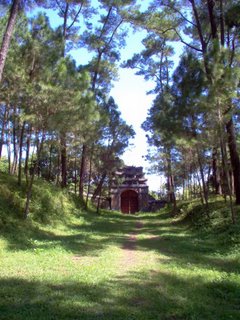 Within this pavilion, open on all four sides, ther centerpiece is a huge 20-ton stone tablet containing Tu Duc's 4,000-character eulogy. Written in Chinese characters, it is actually an autobiography of the emperor. There are also a number of temples and other buildings within the tomb grounds, along with a nice lake with an island in the centre. Towards the end of his rule, Tu Duc spent a lot of time on this island and generally within his tomb, accompanied by his entourage. The tomb of Tu Duc is about 7 km out of the centre of Hue city.
Within this pavilion, open on all four sides, ther centerpiece is a huge 20-ton stone tablet containing Tu Duc's 4,000-character eulogy. Written in Chinese characters, it is actually an autobiography of the emperor. There are also a number of temples and other buildings within the tomb grounds, along with a nice lake with an island in the centre. Towards the end of his rule, Tu Duc spent a lot of time on this island and generally within his tomb, accompanied by his entourage. The tomb of Tu Duc is about 7 km out of the centre of Hue city.
